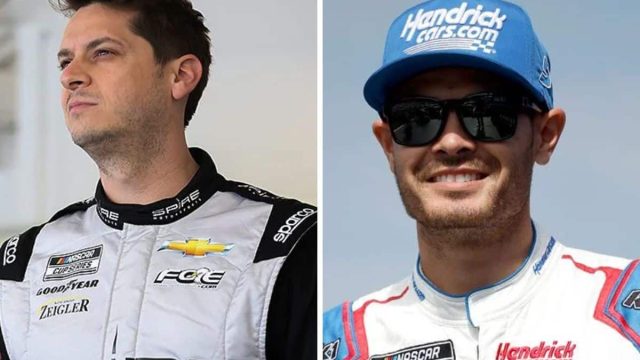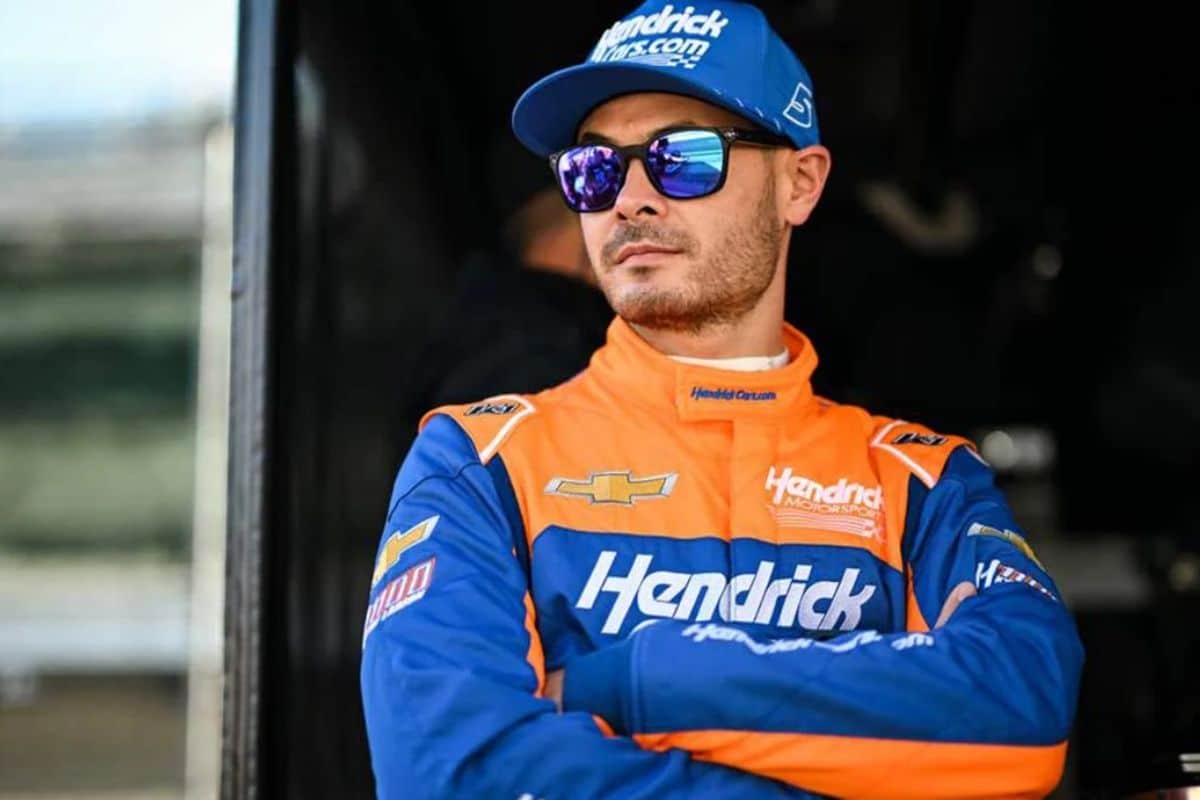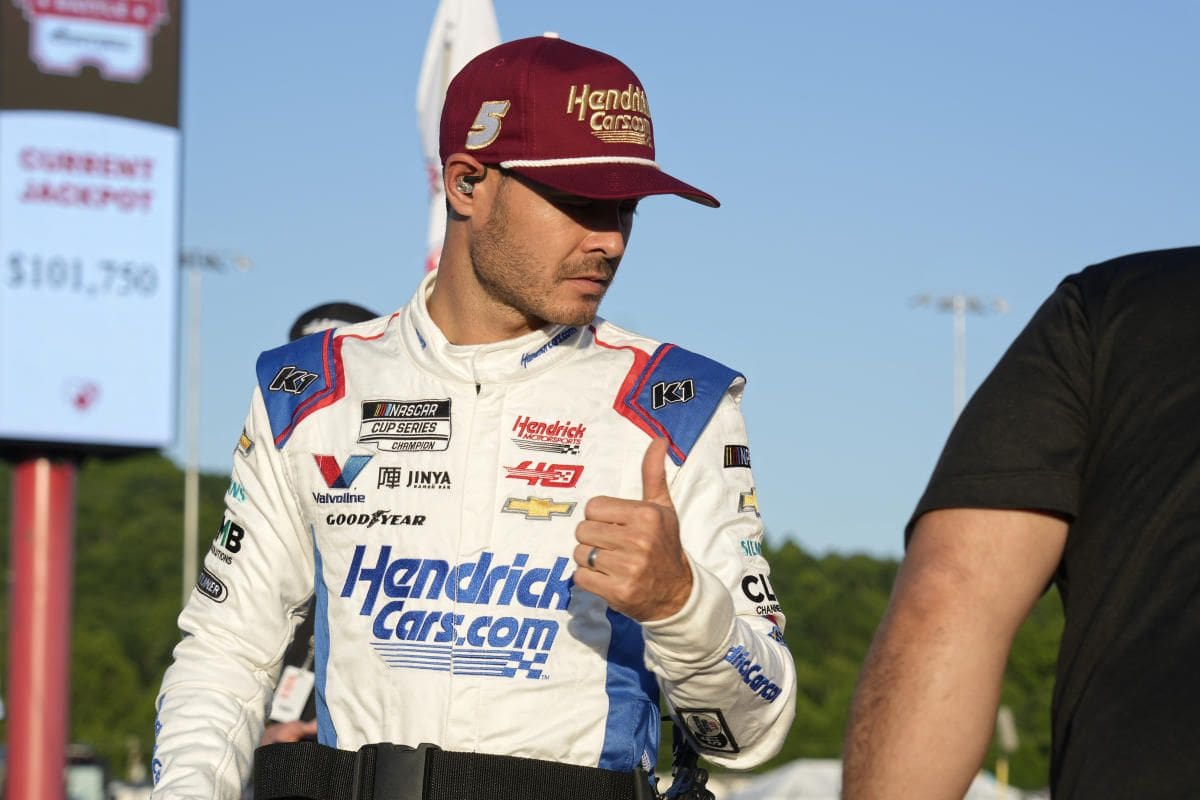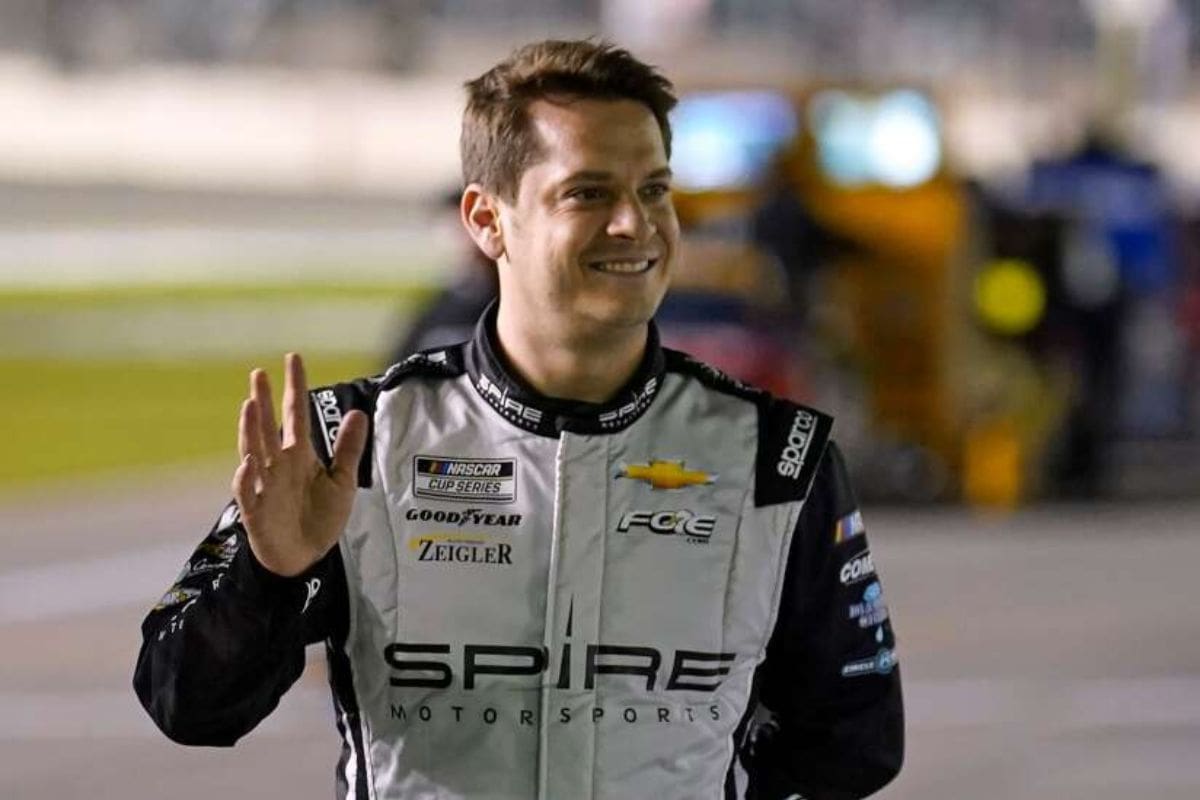HMS and Kyle Larson Deserve Compensation: Landon Cassill’s recent statements highlight a significant issue in NASCAR, as he argues that Hendrick Motorsports (HMS) and Kyle Larson should be compensated for their extensive investment in Larson’s dual-race attempt. This argument sheds light on the financial and logistical complexities involved in such ambitious endeavors, sparking a broader discussion on whether NASCAR should provide financial or logistical support to teams that push the sport’s boundaries. With the debate gaining momentum, the implications for NASCAR’s policies and the future of racing initiatives remain an open question.
Key Highlights
- Landon Cassill advocates for fair compensation for Hendrick Motorsports and Kyle Larson for their double-race attempt.
- Hendrick Motorsports invested about $3 million in supporting Larson’s Indianapolis 500 and Coca-Cola 600 endeavor.
- NASCAR granted Larson and HMS a waiver, recognizing the extraordinary effort and promotional benefits.
- Cassill’s stance highlights the financial and logistical challenges faced by teams in dual-race attempts.
- The event underlines the need for NASCAR to consider compensation or waivers for similar future attempts.
Kyle Larson’s Ambitious Attempt and Unfortunate Outcome
How did Kyle Larson’s ambitious attempt to achieve a historic motorsports double turn into an unfortunate outcome? The veteran driver aimed to make a remarkable mark in American motorsports by competing in both the Indianapolis 500 and the Coca-Cola 600 on the same day.
Successfully completing the grueling 500-mile race at the Indianapolis Motor Speedway, Larson then rushed to Charlotte Motor Speedway to participate in whatever remained of the Coca-Cola 600. However, a significant twist of fate intervened—inclement weather conditions led to the cancellation of the Coca-Cola 600 for that day, nullifying Larson’s chances of completing the historic double.
Larson’s endeavor was not just a personal ambition; it carried substantial implications for Hendrick Motorsports (HMS) as well. The team invested heavily in this project, reportedly to the tune of $3 million, highlighting their commitment to supporting Larson in his audacious quest. This financial commitment covered a range of expenses, from logistics and crew support to car preparation and race-specific modifications. Despite the planning and considerable investment, the unforeseen weather conditions rendered the subsequent part of the double attempt impossible, leading to a collective sense of disappointment and unrealized potential.
The gravity of the situation was compounded by the significant risks involved—both for Larson’s legacy and HMS’s return on investment. According to insider Parker Kligerman’s podcast discussion with Landon Cassill, the incident was a major letdown, emphasizing the unpredictable nature of motorsports.
The Cost of Fielding Larson in Both Races
Fielding Kyle Larson in both the Indianapolis 500 and the Coca-Cola 600 required a significant financial commitment, reportedly amounting to $3 million. This substantial expenditure highlights the complexity and financial burden of running a driver in two of motorsport’s most prestigious events in a single day.
“Hendrick spent $3 million on this effort for Kyle Larson to attempt the double. It’s about $1.5 million to $2 million per top deal in the Indy 500.” – Kligerman
The collaboration with McLaren Racing for the Indy 500 entry, typically costing between $1.5 million and $2 million, was a notable part of this expenditure. This arrangement included sponsorship deals, extensive test sessions, and the deployment of team members, which further inflated costs. The specifics of these expenses reveal the intricate logistics and planning necessary to support such an ambitious endeavor.
View this post on Instagram
Transport logistics also played a pivotal role in the financial outlay. Larson’s travel from Indianapolis to Charlotte via private jet added to the mounting costs. As noted by Landon Cassill, the use of Gulfstream jets for transporting Hendrick executives and team members highlights the premium nature of the logistical support. Cassill estimated that these incidental costs alone could amount to around $1.5 million, emphasizing the meticulous orchestration required behind the scenes.
“Let’s say a million and a half worth of incidentals. On top of the cost of putting Kyle Larson in the car. Seemed maybe light, to me. They had a couple of jets flying back and forth with all the Hendrick executives on it. Gulfstream ain’t cheap.” – Cassill
Moreover, the financial implications extended beyond direct expenses. The investment in personnel, including guests and employees, emphasizes the broader economic impact of fielding Larson in both races. Each element, from travel to test sessions, contributed to the overall financial strain on Hendrick Motorsports.
Debate Over Compensation and Waivers
The debate over compensation and waivers centers on whether NASCAR should acknowledge the unique challenges and financial burdens faced by Hendrick Motorsports and Kyle Larson during their ambitious double attempt. The complexity of participating in both the Indy 500 and Coca-Cola 600 required an extraordinary commitment of resources, time, and effort from both team and driver. This has sparked a discussion on whether NASCAR should offer financial compensation or a waiver to account for these challenges.
Normally, NASCAR’s waiver system is reserved for drivers who are unable to compete due to injuries sustained during a NASCAR event or brief suspensions. The case of Kyle Larson’s attempt to tackle the Indy 500, however, falls outside these traditional circumstances. Despite this, Larson demonstrated a willingness to undertake the demanding schedule, highlighting the need for a potentially more flexible waiver policy.
Landon Cassill humorously remarked on the lavish nature of team celebrations, but his underlying point remains critical—teams like Hendrick Motorsports should receive their fair share from NASCAR. The debate pivots on whether existing policies should evolve to better accommodate the unique endeavors of teams willing to push the boundaries of the sport.
“They have a big family dinner at St. Elmo’s, cause that’s probably too grand. At the end of the day, I just hope that these teams can finally get their fair share from NASCAR.” – Cassill
NASCAR’s Promotion and Decision on the Waiver
NASCAR’s strategic promotion of Kyle Larson’s double attempt, combined with their prolonged deliberation over his eligibility for the 2024 Cup Series championship, highlights the intricate dynamics between marketing ambitions and regulatory decisions. The organization extensively marketed Larson’s ambitious pursuit of competing in both the Indianapolis 500 and the Coca-Cola 600, leveraging his high-profile endeavor to generate widespread attention and raise the sport’s visibility.
However, the decision-making process regarding Larson’s eligibility for the 2024 Cup Series championship reveals a complex interplay between NASCAR’s marketing strategies and its regulatory framework. While promoting Larson’s double attempt, NASCAR simultaneously engaged in a protracted evaluation over whether to grant him a waiver that would safeguard his championship eligibility despite potentially missing races.
Ultimately, NASCAR’s decision to grant Larson and Hendrick Motorsports the waiver was a significant resolution in this saga. It demonstrated NASCAR’s willingness to accommodate exceptional circumstances and recognize the unique challenges posed by Larson’s dual-race aspiration. This outcome rewarded Larson’s commitment and set a precedent for how NASCAR might handle similar situations in the future.
Future Prospects and Reflections
Building on the decision to grant Kyle Larson a waiver, reflections on this event prompt consideration of future dual-race attempts and their implications for the motorsports landscape.
Larson’s ambitious endeavor has put a spotlight on the dedication and extensive support required to undertake such a challenge. The logistical and financial complexities involved are significant, yet the potential for great rewards both for the driver and the sport cannot be overlooked.
Larson’s case exemplifies the intense passion that drives competitors in American motorsports. Hendrick Motorsports’ steadfast support emphasizes the collaborative effort necessary to pursue dual-race attempts. This collaboration not only involves the driver’s skill and endurance but also a well-coordinated team effort, sophisticated planning, and considerable financial investment.
Reflecting on the broader implications, Larson’s dual-race endeavor has reignited discussions about the viability and appeal of such challenges. It highlights the need for clear guidelines and support mechanisms from organizations like NASCAR, ensuring that drivers are not unduly penalized for pursuing extraordinary feats. This could involve revisiting policies on waivers and compensation, as suggested by Landon Cassill, to create an environment that encourages innovation and excellence.
News in Brief: HMS and Kyle Larson Deserve Compensation
The advocacy by Landon Cassill for fair compensation to Hendrick Motorsports and Kyle Larson emphasizes the financial and logistical complexities involved in dual-race endeavors.
The debate highlights the importance for NASCAR to address equitable treatment of teams undertaking ambitious projects. By acknowledging these efforts and potentially offering compensation, NASCAR can promote innovation and support within the sport.
The discourse suggests a need for policy adjustments to guarantee fair recognition and reward for extraordinary contributions to motorsports.
Our Reader’s Queries
Q. Who is Landon Cassill driving for?
A. Landon Cassill will join Kaulig Racing, driving the No. 96 Toyota in upcoming Cup Series races at Daytona and Talladega, backed by a crypto platform sponsor.
Q. Is Landon Cassill still racing NASCAR?
A. Landon Cassill announced on Wednesday morning that he won’t be returning to the Kaulig Racing No. 10 car full-time for the 2023 NASCAR Xfinity Series season. In a tweet, Cassill confirmed, “Unfortunately, I won’t be driving the 10 car full-time this year,” but he plans to continue racing.
Q. What happened to Landon Cassill?
A. On January 18, 2023, Landon Cassill announced he would not return to Kaulig Racing full-time for the 2023 season. The decision follows Voyager Digital’s bankruptcy filing midway through last season.
ALSO READ: Landon Cassill Take on Daytona Crash: Safety, Tradition, and NASCAR’s Crossroads



